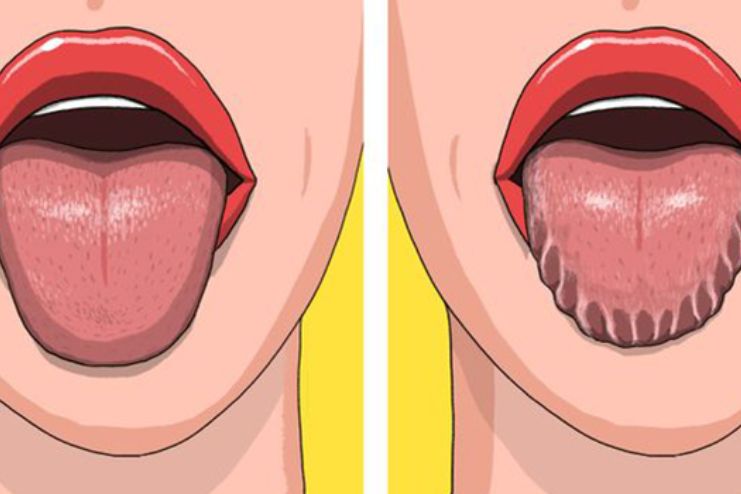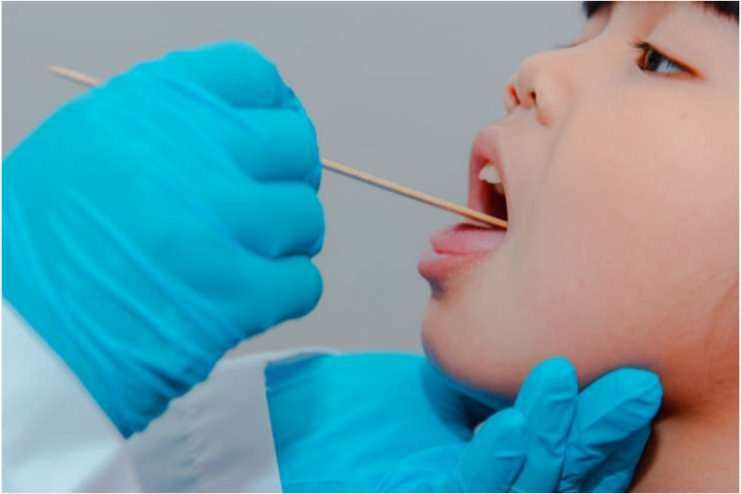AI Contribution
At HealthSpectra, we may use AI to refine grammar and structure, but every piece is shaped, checked, and approved by real people, our expert writers and editors, to ensure clarity, credibility, and care. Learn more..Affiliate Disclaimer
Some links in this article are affiliate links. We may earn a small commission if you make a purchase through these links, at no extra cost to you. We only recommend products we find useful to our readersHave you ever looked in the mirror and seen your tongue’s edges ripple like waves gently crashing against the shore? The tongue rubs against the teeth, creating spaces along its sides, resulting in this odd condition, frequently referred to as a wavy tongue. Although a wavy tongue is typically not a cause for concern, if left untreated, its possible causes may result in more issues and symptoms that could harm oral health.
A wavy tongue can detect poor oral hygiene and diagnose specific medical disorders. Fortunately, you can regain balance and enhance your general health by determining the underlying cause and treating it with hydration, healthy food, or medical attention.
In this article, we’ve tried to provide every detail on the issue of the wavy tongue, including its numerous causes and symptoms. Continue reading for comprehensive information on how to solve way tongue issues.
What Does Wavy Tongue Mean?
A wavy tongue refers to the rippled or scalloped appearance along the sides of the tongue, typically resulting from an enlarged tongue pressing against the teeth. Rippled tongue, crenated tongue, piecrust tongue, and lingua indenta are other names for wavy tongue.
The tongue’s outermost sides exhibit the most apparent scalloping. Understanding the cause of wavy tongue can help avoid or treat any underlying issues, even if the disease is rarely unpleasant or indicates more serious complications.
What are the Symptoms of a Wavy Tongue?

A wavy tongue usually does not have significant symptoms. However, it might be connected to an underlying illness that appears as symptoms.
In addition to scalloped or rippled edges, a wavy tongue can also cause the following moderate symptoms:
- General mild redness
- Discomfort or tenderness
- Sore throat
What are the Causes of the Wavy Tongue?
The most common cause of the condition of the waved tongue is inflammation. The swelling of the tongue is also known as macroglossia. Various health conditions cause macroglossia. Some of the causes of the wavy tongue are listed below.
1. Birth Defect and Genetic Conditions
Some diseases may be linked to you since birth and may lead to a scalloped tongue or macroglossia. The diseases include,
- Apert syndrome
- Congenital syndrome
- Down syndrome
All these conditions have their unique symptoms.
2. Hyperthyroidism
The low level of thyroid hormone causes thyroid disorder. Along with the tongue swelling and wavy tongue, you may also experience the following symptoms of lack of thyroid hormones.
- Tiredness & Hair loss
- Bruising & Aches and cramps
- Low blood pressure
3. Amyloidosis
The accumulation of proteins causes the disease. The buildup occurs in organs and soft tissues, such as the tongue. This triggers inflammation and swelling, which causes the scalloped edges on the sides of the tongue due to the tongue pushing against the teeth.
4. Dehydration
Dehydration can cause the tongue to swell and become constricted in the mouth, which can also cause swelling throughout the body. As a result, the tongue may press against the teeth, causing marks along their edges. This frequently contributes to certain people’s distinctive wavy or scalloped look.
5. Smoking
Smoking raises the risk of swelling and inflammation by triggering an immunological reaction and irritating the mucosal tissues. Additionally, smoking increases the chance of dehydration, which is known to affect the possibility of having a wavy tongue.
6. Sleep Apnea
Sleep apnea can also cause wavy tongues. It occurs due to difficulty breathing while you are asleep. Subconsciously pushing your tongue down into the teeth to open the airway may cause wavy or scalloped tongues.
7. Anxiety
Our bodies can show signs of high anxiety in several ways. Some people have bruxism, temporomandibular joint (TMJ) pain, and other oral habits like pressing the tongue on their teeth as a result of stress and worry. A wavy or scalloped tongue may result from these behaviors over time.
8. An Allergic Reaction, Wound, or Infection
The immune system produces inflammation in reaction to allergens, damage, and infection. As a result of several reactions, the tongue enlarges. The tongue rubs against the teeth as it grows and swells, frequently resulting in pitting or indentation.
9. Other Reasons
Wavy or Scalloped tongues can be a symptom of certain cancers. Individuals with tuberculosis may also have macroglossia. When no other cause is identified, it is crucial to consider these two conditions as possible causes, even if they are not the first ones a doctor will look for.
How to Diagnose Wavy Tongue

Obtaining an accurate diagnosis is crucial. You and your physician can ensure proper treatment by determining the root reason of a wavy tongue. It lessens the possibility of difficulties as well.
In addition to discussing the wavy or scalloped tongue, you and your doctor will examine your general health, any recent changes, and any symptoms you’ve seen.
A doctor may also perform the following tests:
- Magnetic resonance imaging (MRI)
- (CT) scan computed tomography
- Blood tests and biopsies
Treatment Options for Wavy Tongue
The best course of action depends on the cause of wavy tongues. In severe cases caused by inflammatory, hereditary, or infiltrative disorders, surgery may be required to restore the tongue’s form.
Doctors may treat scallop tongue in the following ways:
- Anti-inflammatory drugs
- Mouth guards and other dental gadgets.
- Medication for thyroid hormones
- Immunosuppressive Drugs
- Surgery to remove extra or abnormal tissue and cell deposits
- Surgery to alter the tongue’s form or diminish its size
Home Remedies for Scalloped Tongue
There can be more natural ways to treat or lessen the symptoms of a wavy tongue, depending on the underlying cause. Among the home cures for wavy tongue are:
- Be sure to stay hydrated.
- Maintaining proper dental hygiene
- Keeping a healthy weight
- Regular brushing, flossing, and dental examinations
- Steer clear of allergies
- Give up smoking.
- Use mindfulness techniques to lessen tension and anxiety.
- Put on some warm compresses.
- Working with an occupational therapist to break negative behaviors and retrain the tongue
- Using ice many times a day for 10 minutes at a time, with 20-minute pauses in between
When to See a Doctor?

Anyone with a wavy or scalloped tongue should generally get medical help, especially if their symptoms have been painful or severe.
Seeing a doctor is particularly crucial if symptoms do not go away after quitting habits like teeth grinding or if anti-inflammatory drugs and water do not help.
Even though a wavy or scalloped tongue is uncommon, severe symptoms might indicate more serious problems.
Doctors may find it easier to identify and diagnose other illnesses, like hypothyroidism (low thyroid hormone levels), if a patient has a wavy or scalloped tongue.
Conclusion
Although a wavy tongue may look alarming, it frequently indicates treatable underlying problems such as dietary deficiencies, stress, or dehydration. This illness is curable and reversible with prompt care. Keep in mind that your tongue reflects your overall health, and by monitoring any changes in it, you may be able to identify more serious issues early on. You can take proactive measures toward improved oral health by establishing healthy routines, scheduling routine dental examinations, and addressing possible triggers. In addition to improving overall health, having a healthy tongue also increases self-confidence in day-to-day interactions.
-
Aug 2017Written by Prajakt
-
Dec 2024Edited by Ankita
References
- https://www.goldenstatedentistry.com/blog/scalloped-tongue-causes-treatment
- https://www.medicalnewstoday.com/articles/scalloped-tongue
- https://azdentist.com/conditions/scalloped-tongue
- https://www.healthline.com/health/scalloped-tongue#call-a-doctor
- https://www.teethtalkgirl.com/dental-health/scalloped-tongue
In this Article


















